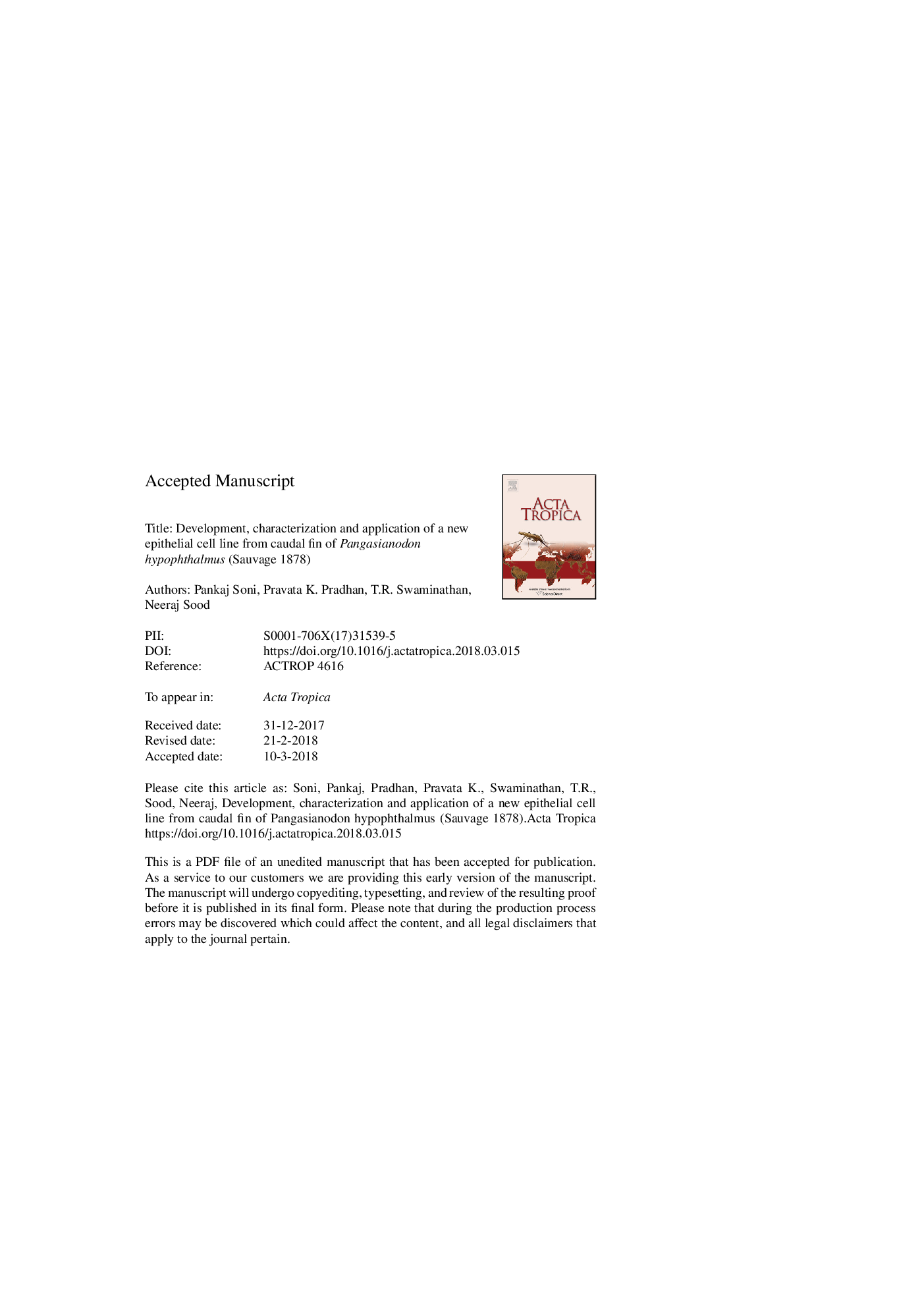| Article ID | Journal | Published Year | Pages | File Type |
|---|---|---|---|---|
| 8744317 | Acta Tropica | 2018 | 20 Pages |
Abstract
A cell line, designated as PHF, has been established from caudal fin of Pangasianodon hypophthalmus. The cell line was developed using explant method and PHF cells have been subcultured for more than 72 passages over a period of 14 months. The cells were able to grow at temperatures between 24 and 32°â¯C, with an optimum temperature of 28°â¯C. The growth rate of PHF cells was directly proportional to FBS concentration, with optimum growth observed at 20% FBS concentration. On the basis of immunophenotyping assay, PHF cells were confirmed to be of epithelial type. Karyotyping of PHF cells revealed diploid number of chromosomes (2nâ¯=â¯60) at 39th and 65th passage, which indicated that the developed cell line is chromosomally stable. The origin of the cell line was confirmed by amplification and sequencing of cytochrome oxidase c subunit I and 16S rRNA genes. The cell line was tested for Mycoplasma contamination and found to be negative. The cells were successfully transfected with GFP reporter gene suggesting that the developed cell line could be utilized for gene expression studies in future. The cell line could be successfully employed for evaluating the cytotoxicity of heavy metals, namely mercuric chloride and sodium arsenite suggesting that PHF cell line can be potential surrogate for whole fish for studying the cytotoxicity of water soluble compounds. The result of virus susceptibility to tilapia lake virus (TiLV) revealed that PHF cells were refractory to TiLV virus. The newly established cell line would be a useful tool for investigating disease outbreaks particularly of viral etiology, transgenic as well as cytotoxicity studies.
Related Topics
Life Sciences
Immunology and Microbiology
Parasitology
Authors
Pankaj Soni, Pravata K. Pradhan, T.R. Swaminathan, Neeraj Sood,
